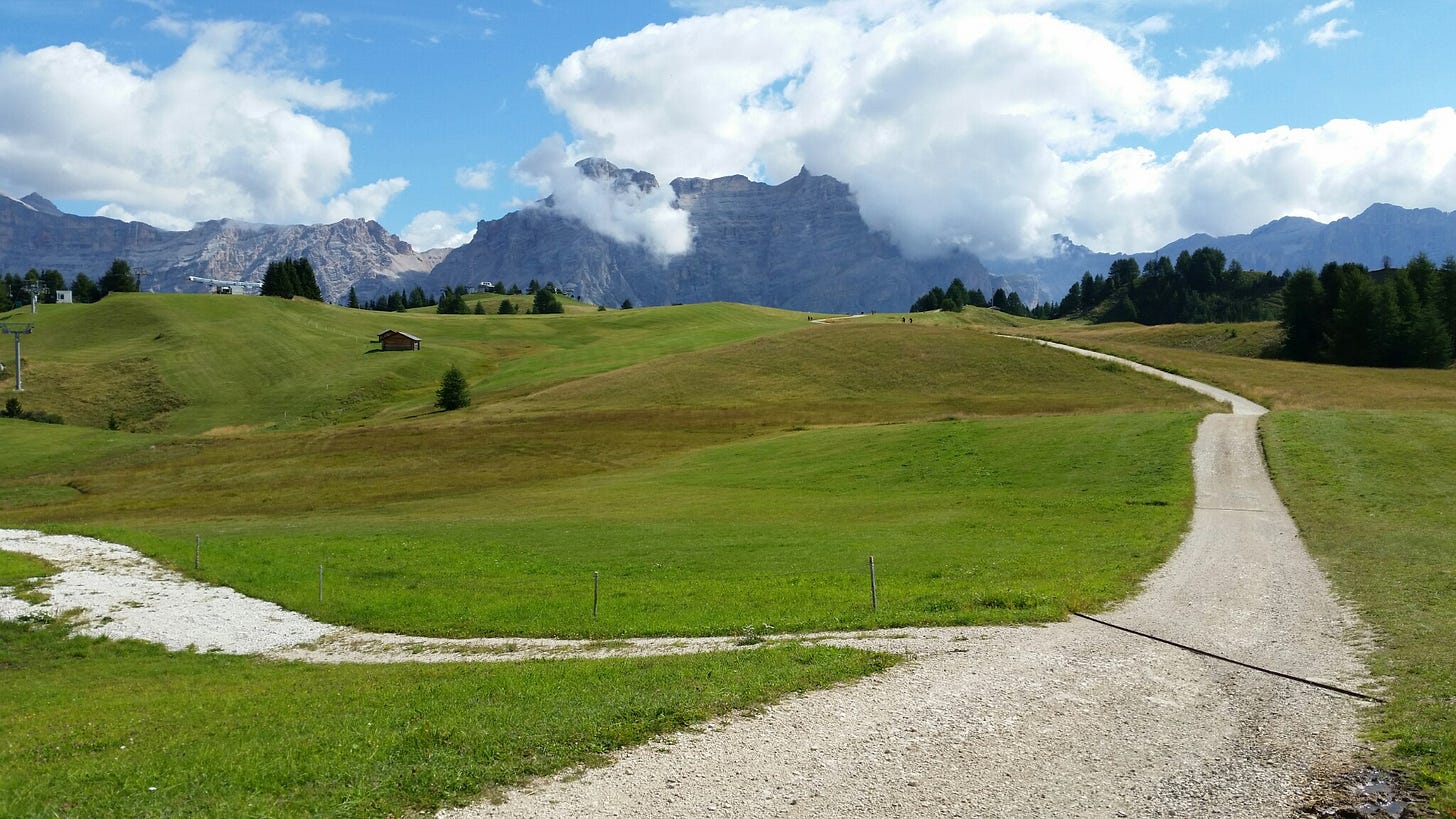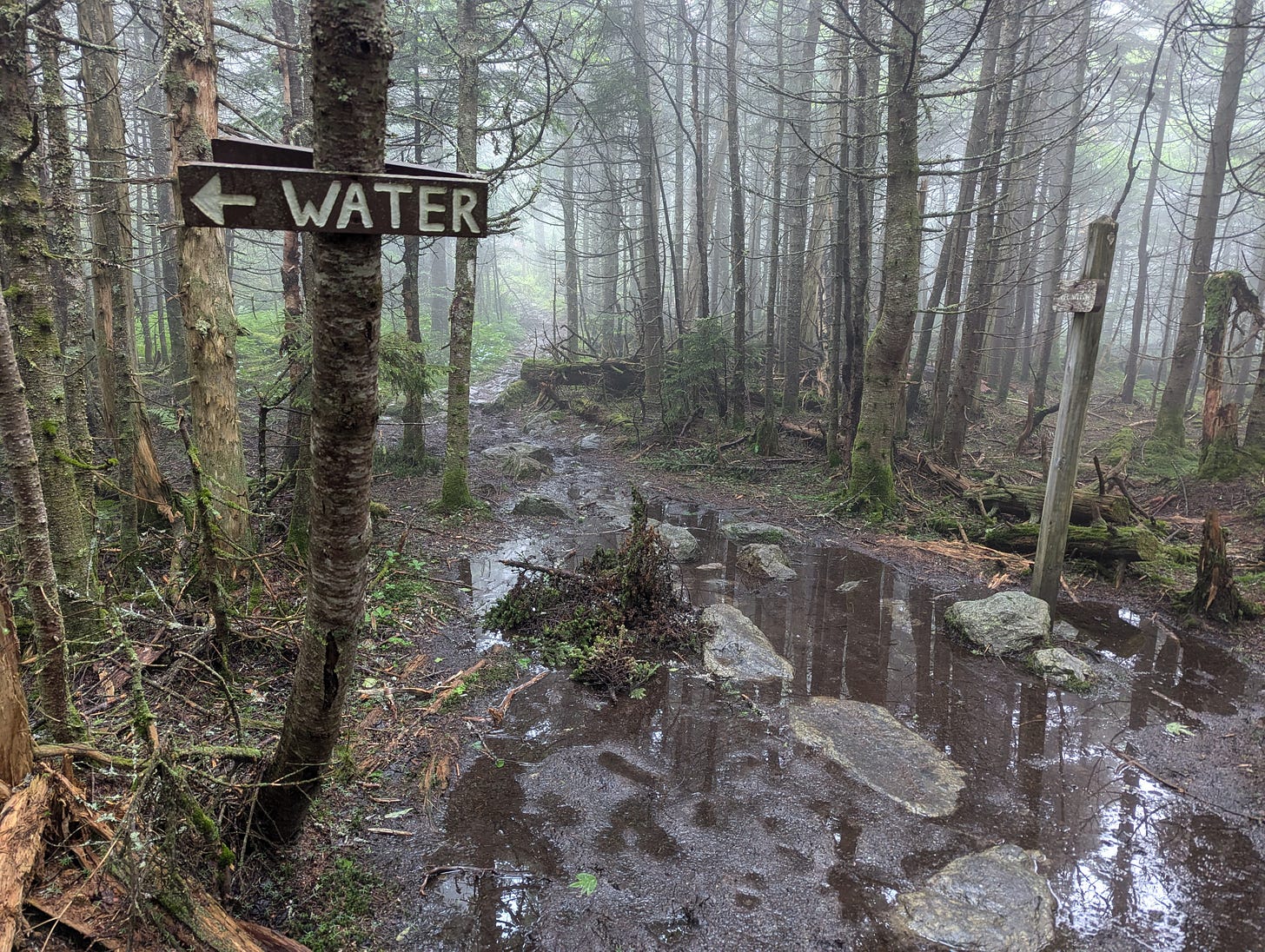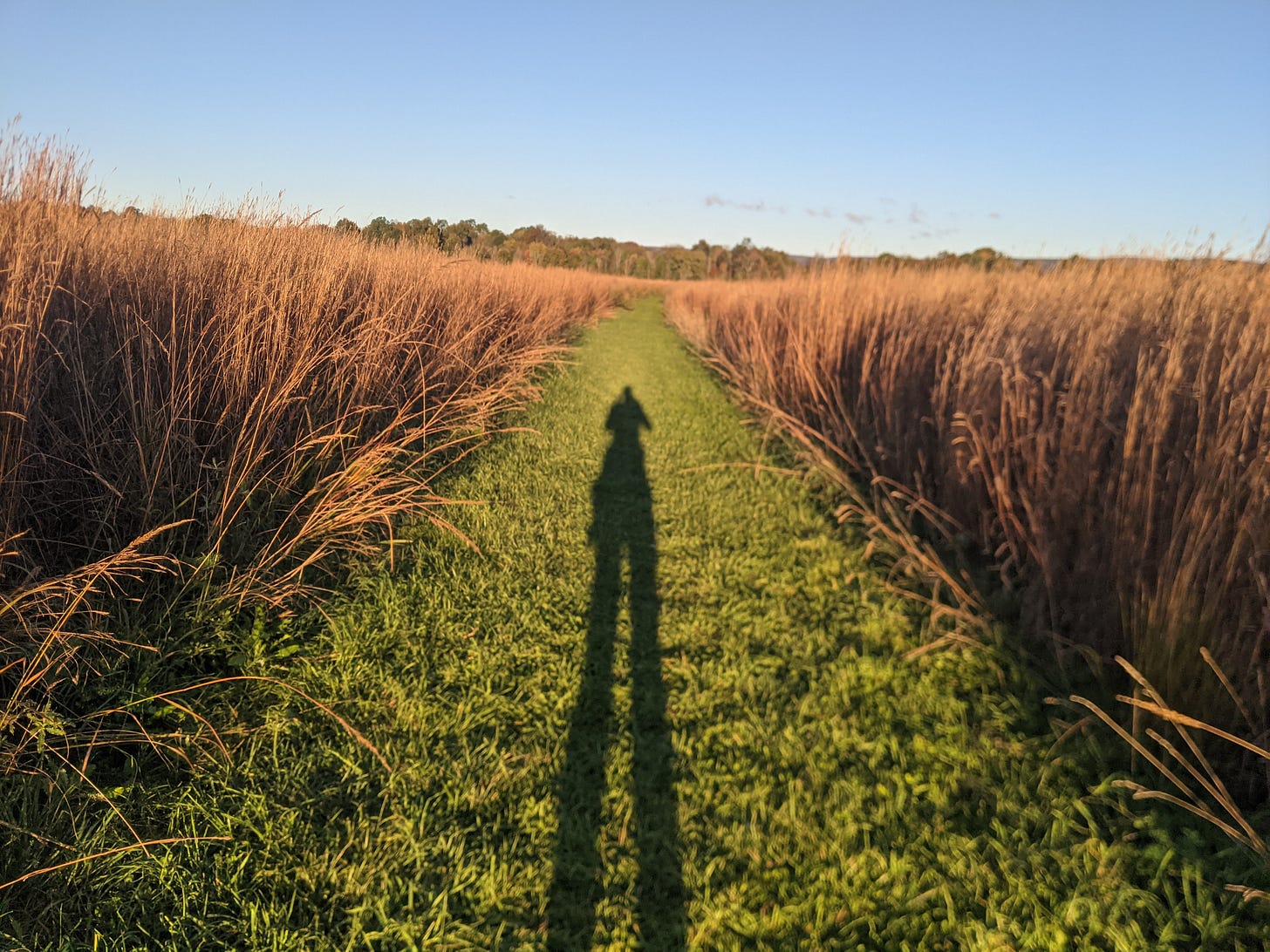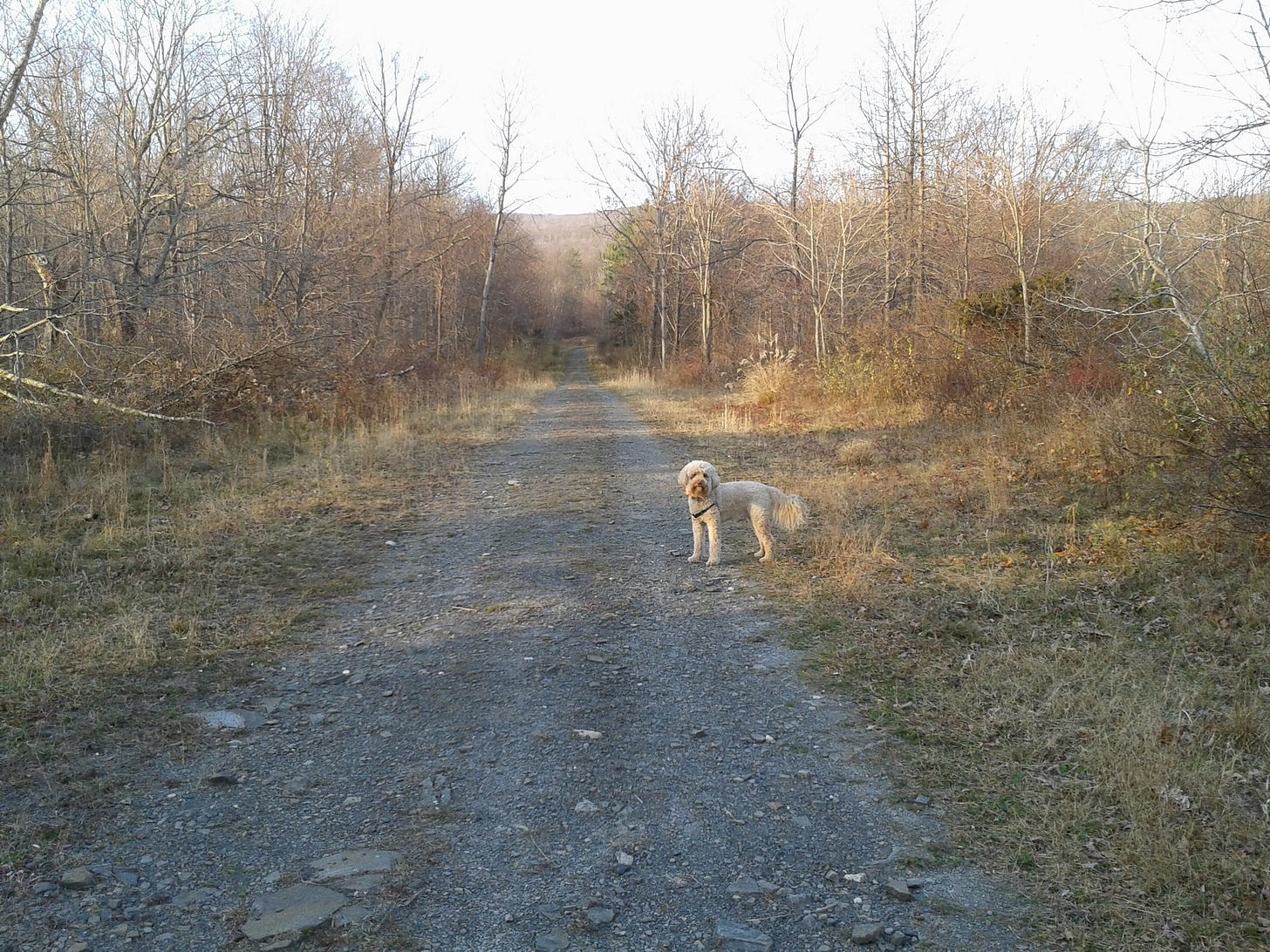We have reached an interesting fork in the road on our collective journey. One way is a short cut to the promised land. The other way takes us home. Speaking as both a runner and an analyst, I’ve made my choice – how about you?
Transhumanism
The short cut is called Transhumanism, which is based on the idea of the Singularity, first promoted by Ray Kurzweill as the point at which biological and artificial intelligence will merge. Merging is a practical necessity, according to the experts, because of the “bandwidth problem” – the ponderous rate at which humans share information through writing and speech, compared to electronic data transfer rates which are nearly a trillion times faster. The Singularity is drawing near. Merge with the machines, and possibly live forever on the net. Or don't and get left behind.
A tech-forward future for humanity is also alluring because our bodies are a source of frustration and pain. Last year I irritated my left meniscus not once but twice, and each time for a month I could hardly walk, and it stung so bad it kept me awake at night. Earlier this year it was a spasm in my lower back which radiated down the front of my right thigh (impinged femoral nerve), and then I strained my right hamstring at a 5-miler a week before the Flying Pigs Marathon in Cincinnati. Feeling undaunted yet unsure, I showed up at the starting line with a pocketful of Ibuprofen, which is not a best practice, and a plan to walk every single step of the uphills and jog slowly on the flats and downs. Not surprisingly I finished well in the back of the pack, but along the way I passed a 90-year old “streaker,” who was running his 27th consecutive Flying Pigs race, and I said to myself, “well, at least I passed someone.” As an aside, it later occurred to me that if I return to Cincinnati and run the race in each of the next 27 years, then I will be his age. Perhaps he was a vision of my future self. Perhaps I am his ghost.
Under Transhumanism, however, none of this matters. Aches and pains and suffering will no longer be mandatory – indeed, they, too, will get left behind. As a runner, I envision the merger effectuated by the implantation of human brains into the metallic skulls of Cyborg bodies, engineered for effortless strength and speed. Think of Alita, played by Rosa Salazar, in the 2019 cyberpunk action film, Alita: Battle Angel. Once her brain was paired with a “berserker” body (the product of an alien technology), Alita was unstoppable -- she tore her opponents apart. Or recall the 1995 anime classic, Ghost in the Shell, whose hero is a mysterious counter-intelligence operator called “the Major.” She was so intent on gaining entry into the armored vehicle in which a rogue AI was hiding, she literally ripped her cyborg muscles to shreds.
Even for casual athletes, the advantages are obvious. Imagine running in the mountains and never sweating or getting out of breath. If you strained a mechanical hamstring, a trip to the shop would get that fixed without the lingering ache in the butt which can, in the case of proximal hamstring tendinopathy, last for months (especially annoying while sitting for long periods, like when driving in my Jeep).
While the cyborg body sounds appealing, technology actually provides a better option. After all, the delicate human brain housed in the cyborg skull could be rattled if the operator missed a root, tripped, and stumbled off a ledge. So, instead of running, how about piloting a drone. Which you could do from the safety of your sofa. You’d experience the same sights and sounds streaming past the sensors, without the risk.
Now, drones, too, have limitations: like cyborg bodies, they are expensive, vulnerable to collision, and have a limited range on a single charge. Plus, you can’t just fly one out of your garage without considering practical issues, like how long would it take you to reach your destination? Suppose you live in New York but would like to explore California’s High Sierra and see why John Muir called this area the “Range of Light.” Suppose you’d like to visit Nepal and see the Himalayan blue sheep which Peter Matthiessen and George Schaller studied during their 1973 research trek (recounted by Matthiessen in the classic, Snow Leopard). Suppose you’d like to see a snow leopard (which Matthiessen never did).
Here's an easier way for runners to experience the outdoors. Let experts venture out into mountainous realms and gather imagery with which to populate a virtual reality accessible on the web. Now you can explore simulated mountains anywhere in the world to your heart’s content. At your leisure. With the flexibility to hit pause to take a call or grab a snack, which might be difficult with a drone unless you were absolutely confident in its autonomous capabilities.
Let’s bring this thought experiment to its logical conclusion. Lean back in a comfortable recliner. Relax and scroll. Let the algorithm do the heavy lifting to find and serve up to you the mountain images and running videos which you find most engaging. Your job is to smile when you are delighted. React with a like or share. Type an occasional comment if you feel so moved. With the help of technology, we’ve maximized enjoyment, while minimizing effort and eliminating risk.
Yes, Transhumanism is a short cut to the promised land. But there’s a catch -- we’re there already. We can access this state of bliss today through social media. Or by interacting with AI. When we pass through the Singularity, we will lose our bodies, but that’s merely a technicality (presumably the procedure is painless).
Walt Whitman, the poet who sang the body electric, foresaw this outcome more than one hundred and fifty years ago, but he didn't think it was a good thing. Writing in the 1850s under the pen name Mose Velsor, he published a column entitled “Manly Health and Training” in which he advocated for physical exercise as a “systematic thing throughout life.” To those who ignored their bodies, he was quite blunt in warning that “all indoor work and no developed physique is death [emphasis in original].”
Now, presumably he was exaggerating. By “death,” he probably meant a mental state characterized by low energy and limited scope for agency. This would be a possible risk of the Transhumanist path.
Transcendentalism -- The Way Home
If Transhumanism is the branch that takes us to where we already are, then the other branch takes us back to where we came from. The American Transcendentalists, who include such notable 19th-century authors as Ralph Waldo Emerson, Henry David Thoreau, John Muir, John Burroughs, and Whitman, believed that people achieve self-transcendence by drawing spiritual energy from nature. Not from technology. At the time, they were reacting in part to the trend of urbanization, which was accelerating in the late 19th century as the frontier closed. Among the clerks, mechanics, teachers, professionals, and others who spent their days indoors, Thoreau remarked on what he perceived as “lives of quiet desperation,” which is a piquant phrase for life in a disengaged, uninspiring, low-energy state.
Today we use the term, “self-transcendence” to signify the hope that we could become tomorrow, in some way, better, stronger, happier, and more productive than we are today. The word “transcend” is derived from the Latin “trans” (across) and “scandere” (to climb) and therefore can be taken, in a sense, to imply the act of crossing a mountain range. Picture our hunter-gatherer ancestors staring at a steep escarpment. Scanning the terrain for a route across the intervening wasteland. Wondering what they would discover on the other side.
The Transcendentalists did not conceive of nature as a pastoral setting but rather as a source of “wildness.” This meant variability. Unpredictability. Risk of discomfort, including temperature extremes. Storms. Predatory animals. Poisonous plants. Annoying insects. Hunger. Thirst. Fatigue. Injury and death. Thoreau explained that the “tonic” of wildness consists of “witnessing our own limitations transgressed.” Or, as we might say today — getting pushed outside our comfort zone.
Wildness is essential, under this view, because the contrast between pleasure and pain is how we learn about reality. Arguably, without pain, there is no pleasure, merely a monotonous and uninteresting existence. This is what Sigmund Freud concluded -- “we are so made that we can derive intense enjoyment only from a contrast and very little from a state of things.” By way of example, imagine you were living outdoors and suffering through a difficult winter. When springtime temperatures finally reached 68 degrees, and you could bask in the sun and finally stop shivering — this would feel like paradise. Whereas in an office building with thermostat set to 68 F year around, the constant temperature evokes no reaction ever. Or, imagine you had ice cream every day for breakfast, lunch, and dinner.
Contrast ensures that you will get a dose of stress, which prods you to develop mentally, physically, and spiritually. The scientific term for this process is “hormesis,” which refers to how a low dose of stress or toxicity causes a living creature to respond, adapt, and become stronger. This is what happens when a person undergoes physical training, suffering micro-tears in their muscles that produce greater strength and speed once the body’s recovered. Incidentally, Hormesis is the core idea behind Nassim Taleb’s term “anti-fragility” and his opinion that many people would benefit from experiencing a higher dose of volatility in their lives, rather than hiding from it.
In this light, transcendentalism is the opposite of transhumanism -- those 19th century writers thought we needed the rough stimuli of the wild in order to fully develop our human capabilities.
The Third Way
If Transhumanism and Transcendentalism seem like branches pointing in totally different directions, there may be for most of us a third way. One between the two extremes. For example, Thoreau said he needed at least four hours a day outdoors to avoid “taking on rust.” Still, he built a cabin on the shore of Walden Pond, evidently not feeling the need to sleep out in the rain. The pressing question for us today is how much nature we need in our highly tech-forward lives — four hours, or more, or less?
Think of the third path as an attempt to optimize. To find the right combination of comfortable monotony, which is the hallmark of max productivity -- and the pain associated with intensity and surprise. Think of this path as a strategy to engage the full suite of mind-body capabilities. A strategy to harness the energy and strength which constitute our birthright. To avoid the low-energy trap of anxiety and desperation.
However, be advised -- the third path might be unique to you. If so, other people may not be able to see it. Or help you find it. Go with the flow, and you might well miss it. Which would be a shame, unless you're resigned to a life of quiet desperation.
The other morning, I saw the coastal mountains of Los Angeles shimmering in the morning light, draped in a haze of ocean mist and desert dust. The ragged silhouette of a rocky slope caught my eye – it seemed impossibly steep. Barefoot I walked along a rocky path, past poppies and columbines and the trill of cold clear water in a narrow valley which seemed impossibly deep. I didn’t stay there long, but I brought some energy back with me to the world of freeways, laptops, social media, and conference calls. It helped me get done what I needed to do.






"Wildness is essential, under this view, because the contrast between pleasure and pain is how we learn about reality. Arguably, without pain, there is no pleasure, merely a monotonous and uninteresting existence."
Love and grieving work in a similar fashion. Nicely done, Ken. I liked the ending image of the LA mountains. Grounded everything in something tangible after all the big ideas.